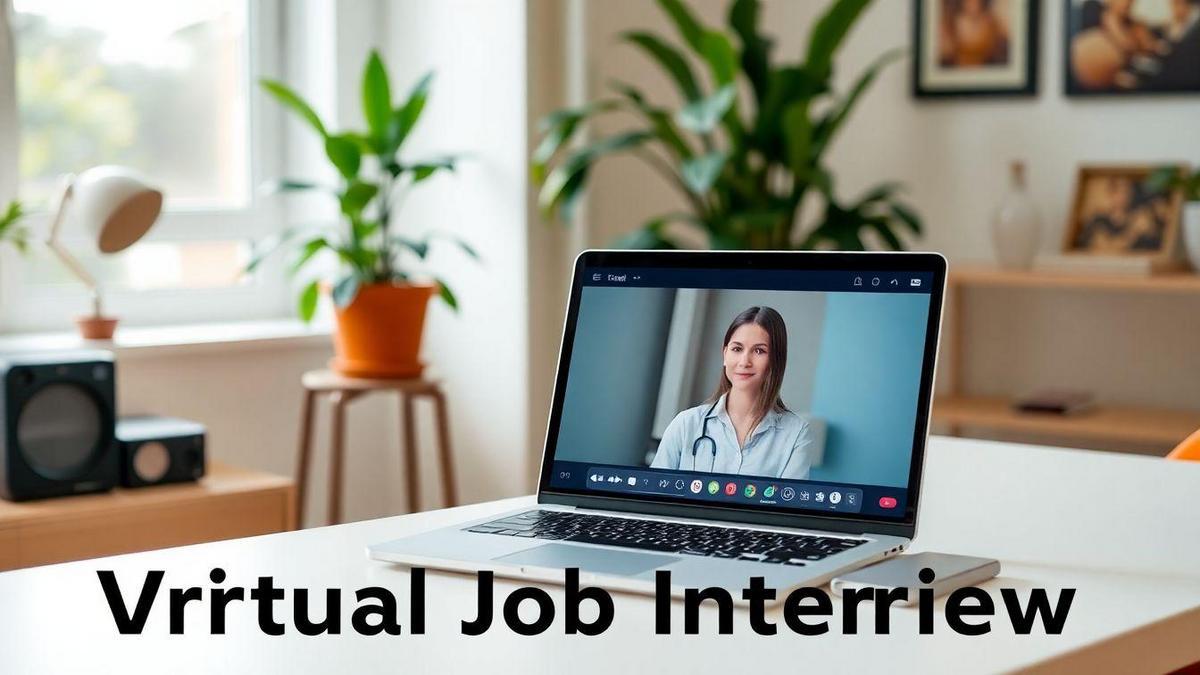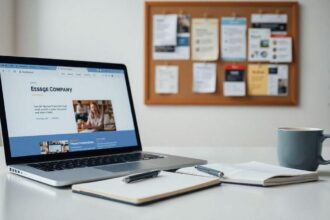In today’s world, best practices for virtual job interviews in creative industries are more important than ever. Preparing for a virtual interview can feel overwhelming. It’s not just about the technology; it’s about body language, communication, and confidence. In this article, I will navigate you through essential tools, common platforms, and how to master your non-verbal cues. By understanding these key elements, you’ll be ready to impress your future employer and land that dream job. Let’s dive in!
Essential Virtual Interview Technology
Choosing the Right Tools for Success
When it comes to virtual interviews, choosing the right tools is crucial for success. The technology I use plays a big role in making a great impression. The right platform can help me communicate clearly and confidently, while the wrong one can lead to misunderstandings.
Here’s what I consider when picking my tools:
- Video Quality: A platform that offers clear video and audio is essential. If I can’t hear or see well, it’s hard to connect.
- User-Friendly Interface: I prefer a platform that is easy to navigate. I don’t want to waste time figuring it out.
- Features: I look for features like screen sharing and chat options to present my work better.
- Compatibility: It’s important that the platform works well on my device to avoid technical glitches during the interview.
Common Virtual Interview Platforms
There are many platforms to choose from for virtual interviews. Here are a few I often consider:
| Platform | Key Features | Best For |
|---|---|---|
| Zoom | Breakout rooms, screen sharing | Group interviews |
| Microsoft Teams | Integration with Office apps | Corporate settings |
| Google Meet | Easy access with Google accounts | Casual interviews |
| Skype | Simple interface, call recording | One-on-one chats |
Each platform has its strengths, and I choose based on what fits my needs best.
Understanding Virtual Interview Technology
Understanding how virtual interview technology works is essential. It’s not just about having the tools; it’s about knowing how to use them effectively. I make sure to test everything beforehand to feel prepared.
I also pay attention to my environment. Good lighting and a clean background make a difference. I want my interviewer to focus on me, not distractions.
Ultimately, the best practices for virtual job interviews in creative industries hinge on my ability to adapt and present myself well through technology. By choosing the right tools and understanding how to use them, I can shine in any virtual interview.
Mastering Body Language in Virtual Interviews
The Importance of Non-Verbal Cues
In virtual interviews, non-verbal cues play a huge role. It’s not just about what I say, but how I say it. My body language can speak volumes. Studies show that up to 93% of communication is non-verbal, meaning the way I sit, my facial expressions, and even my eye contact can influence how the interviewer perceives me.
Tips for Effective Body Language
Here are some simple tips I follow to make my body language work for me during virtual interviews:
- Sit Up Straight: Good posture shows I’m engaged and confident.
- Maintain Eye Contact: I look at the camera, not the screen, to connect better.
- Use Hand Gestures: I use my hands to emphasize points, but keep it natural.
- Smile: A genuine smile can significantly impact how I come across.
- Nod Occasionally: This shows I’m listening and understanding.
Leveraging Body Language in Virtual Interviews
To really leverage my body language, I focus on a few key aspects:
| Body Language Aspect | How It Helps |
|---|---|
| Posture | Projects confidence and readiness |
| Facial Expressions | Communicates enthusiasm and interest |
| Gestures | Reinforces my words and makes me memorable |
| Eye Contact | Builds trust and connection |
By being aware of these elements, I can present myself in the best light, showing the interviewer that I’m genuinely excited about the opportunity.
Preparing for Common Virtual Interview Questions
Key Questions to Expect
When I step into a virtual interview, I know there are some key questions I can almost count on hearing. These often revolve around my skills, experiences, and how I fit into the company’s culture. Here are some I always prepare for:
- Tell me about yourself. This is my chance to share my story, so I keep it concise and relevant.
- Why do you want to work here? I highlight my passion for the company’s mission and values.
- What are your strengths and weaknesses? I focus on strengths that align with the job and discuss weaknesses I’m actively improving.
- Describe a challenge you faced and how you handled it. I always have a specific example ready to showcase my problem-solving skills.
Crafting Your Responses
Crafting my responses is where I really shine. I want my answers to be clear and engaging. Here’s how I do it:
- Use the STAR method. This stands for Situation, Task, Action, and Result. It helps me tell a complete story.
- Be authentic. I share my true experiences and feelings, making my responses more relatable.
- Practice makes perfect. I rehearse my answers out loud to feel comfortable and confident.
Here’s a quick table to help me remember the STAR method:
| Component | What to Include |
|---|---|
| Situation | Describe the context of the experience. |
| Task | Explain my responsibility. |
| Action | Detail the steps I took to address the issue. |
| Result | Share the outcome and what I learned. |
Best Practices for Virtual Interviews in Creative Industries
In the creative industries, virtual interviews come with unique challenges. Here are some best practices I always keep in mind:
- Dress the part. I wear professional attire to show I’m serious about the opportunity.
- Check my tech. I test my camera and microphone beforehand to avoid any hiccups during the interview.
- Create a suitable environment. I find a quiet, well-lit space to minimize distractions.
- Showcase my work. I prepare a digital portfolio to share my projects and highlight my skills.
By following these tips, I feel more prepared and confident in my virtual interviews, ensuring I implement the best practices for virtual job interviews in creative industries.






